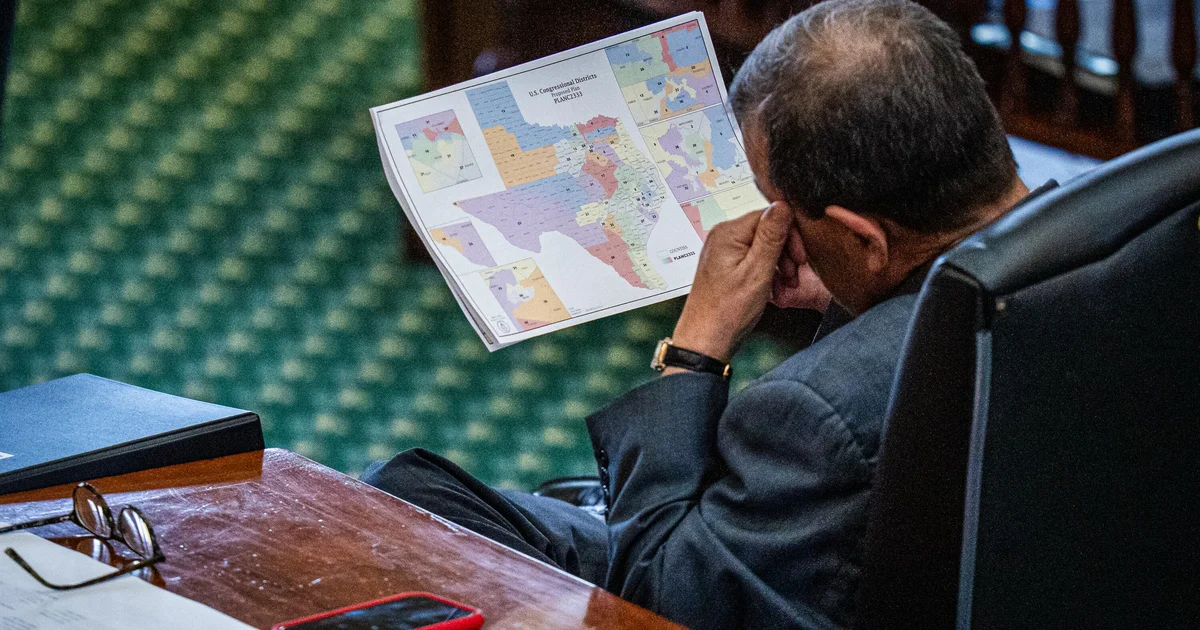
A three-judge panel at the federal court in El Paso will begin a hearing on Wednesday to determine if the state’s new Congressional maps are constitutional.
Plaintiffs, including Democratic lawmakers, are hoping to block the newly drawn Congressional maps approved by Texas Republicans during last month’s special session.
The plaintiffs say Republicans are violating the Constitution and the Voting Rights Act because they used race when drawing up these new Congressional districts.
The State of Texas and Republicans deny that and say they only considered partisan gain with the goal of winning five new seats.
Redistricting under scrutiny
During a virtual news conference on Monday, Marina Jenkins, the Executive Director of the National Redistricting Foundation, which is helping plaintiffs in their case against Texas, sounded the alarm.
“This is urgent,” Jenkins said.
Jenkins and plaintiffs accuse the state of racially gerrymandering six of the state’s 38 Congressional Districts and say they intentionally diluted the vote of blacks and Latinos who live in those districts. They say after President Trump announced he wanted Texas Republicans to find five new Congressional seats in Texas, the Justice Department sent Texas a letter stating four Democratic Congressional Districts, including the 33rd in North Texas represented by Congressman Marc Veasey, were unconstitutional coalition districts and “run afoul the Voting Rights Act.”
Jenkins pointed to Texas Gov. Greg Abbott’s Special Session proclamation for redrawing Congressional Districts in July, “in light of constitutional concerns.”
“The DOJ obliged, providing Governor Abbott with the cover he was looking for, a road map as to how to redraw these districts,” Jenkins said. “The DOJ wrote to Governor Abbott, insisting that Texas target specific majority-minority districts because of their racial composition.”
In response, the Texas Attorney General’s Office said in court papers that the DOJ letter was wrong.
“The letter erroneously accused Texas of racial gerrymandering in four districts in the prior map and demanded that those districts be rectified … The only logical reading of the letter is as a demand for new districts drawn without regard to race.”
Race, representation, and legal challenges
Republicans, including State Rep. Katrina Pierson of Rockwall, insist they did not consider race in drawing the new maps.
“I just reject the notion that race is even involved here, because one of the things that we did hear is that they wanted districts of people who look like them, sound like them, have the same culture, and those districts exist,” Pierson told CBS News Texas. “There’s four new Hispanic seats. It just doesn’t make any sense.”
The newly drawn 33rd Congressional District, which is now in both Tarrant and Dallas counties, will only be in Dallas County under the newly drawn map. It will become a Latino majority district, but Democratic State Rep. Rafael Anchia of Dallas told CBS News Texas that he doesn’t think it will help Latinos.
“I doubt very, very seriously that Latinos will be able to elect the person of their choice,” said Anchia. “Representation is important. The Latino community is already underrepresented under the existing political maps. We go backwards under these new maps.”
The three-judge panel is expected to determine whether to uphold or reject the new Congressional maps in mid-October. From there, the case may be appealed directly to the U.S. Supreme Court.
Timing is important because the Congressional maps need to be in place before November 8, when candidates start filing their campaign paperwork with the state.



